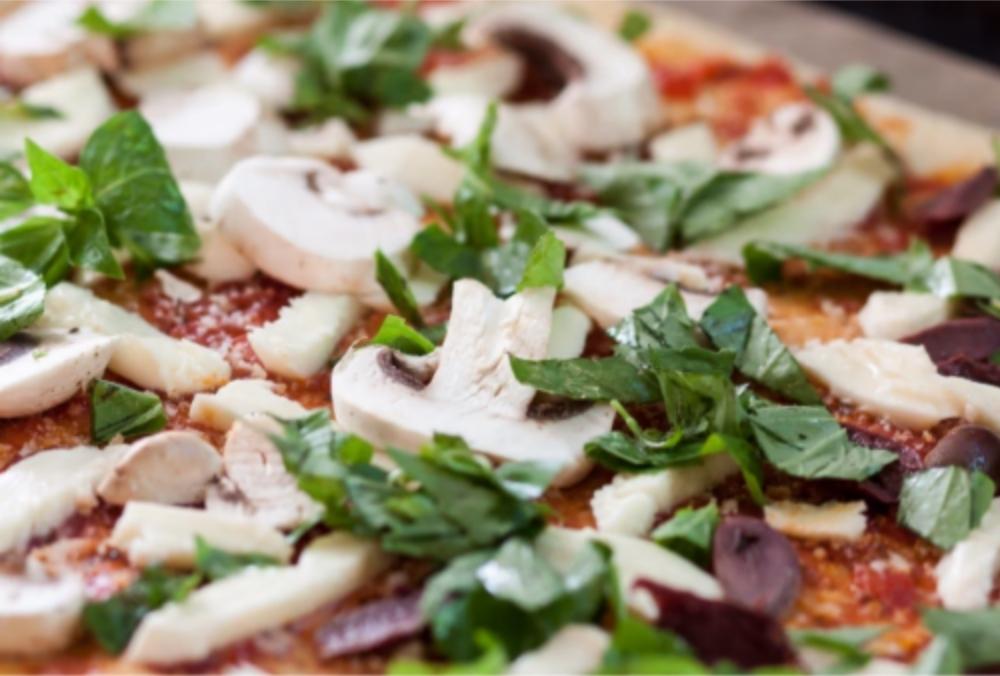Boussole
Wellness
Blog
Boussole Wellness
Blog
Let’s navigate the journey from burnout to blissful balance together!
Learn how I turned exhaustion into empowerment, and am now living a life full of energy and love.

6 Science-Backed Ways to Avoid Burnout
Last week I shared the number one way to avoid burnout: PHYSICAL ACTIVITY!
It’s a quick 5 minute read on how moving your body helps you complete the stress cycle, which is the ultimate way to avoid burnout.
When I first read this in Burnout: The Secret to Unlocking the Stress Cycle by Emily and Amelia Nagoski, I was honestly surprised.
Why? Because I worked out all the time.
It was the ONLY thing I made a priority after work.
Every day I made time for an hour-long workout, whether that was at 5 am or 9 pm.
I worked out at home with weights or on my spin trainer in winter, and I ran, biked, or did stairs during the warmer months. Some years I had a gym membership, and some years I had a personal trainer. Some years I trained for a triathlon or a half-marathon. Some years I got injured and had to improvise.
But I always made time to work out. It was the one thing that kept my anxiety and depression (mostly) at bay. It was my escape from work, from the reality of my day-to-day mundane existence.
And yet…
Despite breaking a sweat and purging my body of its stress hormones...
Despite working out every day...
Despite making exercise a priority...
I still managed to burn out multiple times over 18 years.
Why?
Because beating burnout requires a multi-pronged approach.
A one-size-fits-all solution to recover from burnout and prevent future burnout is a fantasy.
It doesn’t exist.
The answer is not as simple as prioritizing daily movement.
If it was—I would have been burnout-free!
But that wasn’t the case.
So what is a multi-pronged approach?
The Nagoski sisters highlight six other science-backed strategies (besides physical activity) that can help you close out the stress cycle.
Deep breathing
Positive social interactions
Laughter
Affection
Crying
Creative expression
This isn’t an exhaustive list, but it is a solid starting point for anyone wanting to burnout proof their life (and who doesn’t want that?).
While on leave, I had time to experiment with these strategies and found what works best for me.
You may not have the time afforded by a leave, but you can still experiment with these six strategies to figure out what works best for you.
Each of these strategies induces the relaxation response which helps close the stress response cycle and return your body to equilibrium.
Deep Breathing
If you’re like most people, you probably tend to shallow breathe from your chest. When you do this, you are more likely to feel tense, nervous, and anxious. Deep breathing (or abdominal breathing) encourages full oxygen exchange. It can slow your heart rate and lower your blood pressure.
Two of my favourite ways to practice deep breathing are box breathing and 4-7-8 breathing. Try them and let me know which one you like best.
For either of these techniques, find a quiet place and sit or lie down in a comfortable position.
Box Breathing
Close your eyes. Breathe in through your nose for a count of four.
Gently hold your breath. Count to four.
Exhale for four.
Repeat the cycle a minimum of five times.
Notice how you feel afterward.
4-7-8 Breathing
First, let your lips part. Make a whooshing sound, exhaling completely through your mouth.
Next, close your lips, inhaling silently through your
nose as you count to four in your head.Then, for seven seconds, hold your breath.
Make another whooshing exhale from your mouth for eight
seconds.Repeat the cycle 4-5 times.
Notice how you feel afterward.
Positive Social Interactions
Psychologists call the ability of close social partners to reduce our stress response social buffering. Positive social interactions with our friends and family have benefits for both our physical and mental health. So when you’re feeling stressed, connect with a loved one!
Even positive social interactions with strangers can help, like smiling at someone in the supermarket or thanking your barista. They tell your brain the world is a safe place, which is the reassurance it needs when you’re feeling stressed out.
Besides, don’t we all feel a little happier when a smile or thank you is exchanged?
Laughter
Laughter has too many benefits to list, but some that help with our stress response include:
Lowers stress hormones
Relaxes muscles
Eases anxiety and tension
Relieves stress
Improves mood
Strengthens resilience
Adds joy and zest to life (my favourite!)
Sharing a giggle or a big belly laugh with loved ones is priceless. I love making my one-year-old giggle (it’s one of the best sounds in the world) and I have a few friends I can depend on for the deep belly laughs that let you know you’re truly alive.
Make time for more of that in your life!
Affection
The Gottman Institute has some interesting research on affection that I wholeheartedly agree with. I remind my partner of these two examples quite frequently. 😉
The six-second kiss: As Emily and Amelia Nagoski point out, six seconds is a “potentially awkwardly long kiss. But there’s a reason for it… Kissing for six seconds requires you to stop and deliberately notice that you like this person, that you trust them, and that you feel affection for them. By noticing these things, the kiss tells your body that you are safe with your tribe.”
The twenty-second hug: Research suggests that a twenty-second hug can lower your blood pressure and your heart rate, change your hormones, and improve your mood. Like the six-second kiss, it tells your body you’re safe.
Being affectionate with your pet also counts! There is a reason animal therapy is becoming more popular. Petting your cat, dog, or hamster for a few minutes can lower your blood pressure and heart rate, invoking the relaxation response.
Crying
I don’t know about you, but I’ve certainly experienced the shift that happens in my body after I’ve had a big cry.
Recently I was feeling a bit stressed and I decided to watch From Scratch again on Netflix. (Spoiler alert: it’s a tearjerker)
Tears were streaming down my face and I had to muffle my big sobs so as not to wake my sleeping kids.
It did the trick. I felt calmer and more at peace than I had before watching.
Whether or not the stressor has been dealt with, going through the complete emotional cycle and letting it all out with a big ugly cry helps you feel better.
Creative Expression
The arts encourage us to feel big emotions, whether it’s through music, film, theatre, sculpture, painting, or storytelling.
Think about the music you listen to when you’re falling in love versus what you listen to when you’ve had a terrible breakup—there’s a playlist for both.
Creative expression allows you to get messy and feel all the feelings. However you choose to create—paint, sculpt, draw, compose, write, act, play—you get to close the stress response cycle and get back to equilibrium.
If you currently don’t have a creative outlet, maybe it’s time to find one.
There you have it, six strategies to add to your stress relief toolbox.
Using a multi-pronged approach to banish burnout for good requires multiple strategies to close the stress response cycle.
Make physical activity the priority as it’s the most effective way to close the stress cycle and avoid burnout.
But it’s also important to make time for these six science-backed strategies as often as you can.
Find what works for you and be intentional about it.
Some examples of how you can include these strategies in your day-to-day routine:
Start or end your day with deep breathing
Smile and say hello to the grocery store cashier, the man walking his dog, the woman sitting next to you on the bus
Make time for friends who make you laugh
Try the six-second kiss and twenty-second hug with your favourite person!
Watch a tearjerker movie with a big box of tissues and let the tears flow
Discover a creative pursuit! Think back to when you were in school, what did you enjoy in the arts? Or what are you curious about and want to try? Take a class! Go get messy!
Laughing with friends, smiling at strangers, being affectionate with my partner, and getting creative all helped me recover from burnout and find my way to a more blissful and balanced life.
They can do the same for you!

6 Science-Backed Ways to Avoid Burnout
Last week I shared the number one way to avoid burnout: PHYSICAL ACTIVITY!
It’s a quick 5 minute read on how moving your body helps you complete the stress cycle, which is the ultimate way to avoid burnout.
When I first read this in Burnout: The Secret to Unlocking the Stress Cycle by Emily and Amelia Nagoski, I was honestly surprised.
Why? Because I worked out all the time.
It was the ONLY thing I made a priority after work.
Every day I made time for an hour-long workout, whether that was at 5 am or 9 pm.
I worked out at home with weights or on my spin trainer in winter, and I ran, biked, or did stairs during the warmer months. Some years I had a gym membership, and some years I had a personal trainer. Some years I trained for a triathlon or a half-marathon. Some years I got injured and had to improvise.
But I always made time to work out. It was the one thing that kept my anxiety and depression (mostly) at bay. It was my escape from work, from the reality of my day-to-day mundane existence.
And yet…
Despite breaking a sweat and purging my body of its stress hormones...
Despite working out every day...
Despite making exercise a priority...
I still managed to burn out multiple times over 18 years.
Why?
Because beating burnout requires a multi-pronged approach.
A one-size-fits-all solution to recover from burnout and prevent future burnout is a fantasy.
It doesn’t exist.
The answer is not as simple as prioritizing daily movement.
If it was—I would have been burnout-free!
But that wasn’t the case.
So what is a multi-pronged approach?
The Nagoski sisters highlight six other science-backed strategies (besides physical activity) that can help you close out the stress cycle.
Deep breathing
Positive social interactions
Laughter
Affection
Crying
Creative expression
This isn’t an exhaustive list, but it is a solid starting point for anyone wanting to burnout proof their life (and who doesn’t want that?).
While on leave, I had time to experiment with these strategies and found what works best for me.
You may not have the time afforded by a leave, but you can still experiment with these six strategies to figure out what works best for you.
Each of these strategies induces the relaxation response which helps close the stress response cycle and return your body to equilibrium.
Deep Breathing
If you’re like most people, you probably tend to shallow breathe from your chest. When you do this, you are more likely to feel tense, nervous, and anxious. Deep breathing (or abdominal breathing) encourages full oxygen exchange. It can slow your heart rate and lower your blood pressure.
Two of my favourite ways to practice deep breathing are box breathing and 4-7-8 breathing. Try them and let me know which one you like best.
For either of these techniques, find a quiet place and sit or lie down in a comfortable position.
Box Breathing
Close your eyes. Breathe in through your nose for a count of four.
Gently hold your breath. Count to four.
Exhale for four.
Repeat the cycle a minimum of five times.
Notice how you feel afterward.
4-7-8 Breathing
First, let your lips part. Make a whooshing sound, exhaling completely through your mouth.
Next, close your lips, inhaling silently through your
nose as you count to four in your head.Then, for seven seconds, hold your breath.
Make another whooshing exhale from your mouth for eight
seconds.Repeat the cycle 4-5 times.
Notice how you feel afterward.
Positive Social Interactions
Psychologists call the ability of close social partners to reduce our stress response social buffering. Positive social interactions with our friends and family have benefits for both our physical and mental health. So when you’re feeling stressed, connect with a loved one!
Even positive social interactions with strangers can help, like smiling at someone in the supermarket or thanking your barista. They tell your brain the world is a safe place, which is the reassurance it needs when you’re feeling stressed out.
Besides, don’t we all feel a little happier when a smile or thank you is exchanged?
Laughter
Laughter has too many benefits to list, but some that help with our stress response include:
Lowers stress hormones
Relaxes muscles
Eases anxiety and tension
Relieves stress
Improves mood
Strengthens resilience
Adds joy and zest to life (my favourite!)
Sharing a giggle or a big belly laugh with loved ones is priceless. I love making my one-year-old giggle (it’s one of the best sounds in the world) and I have a few friends I can depend on for the deep belly laughs that let you know you’re truly alive.
Make time for more of that in your life!
Affection
The Gottman Institute has some interesting research on affection that I wholeheartedly agree with. I remind my partner of these two examples quite frequently. 😉
The six-second kiss: As Emily and Amelia Nagoski point out, six seconds is a “potentially awkwardly long kiss. But there’s a reason for it… Kissing for six seconds requires you to stop and deliberately notice that you like this person, that you trust them, and that you feel affection for them. By noticing these things, the kiss tells your body that you are safe with your tribe.”
The twenty-second hug: Research suggests that a twenty-second hug can lower your blood pressure and your heart rate, change your hormones, and improve your mood. Like the six-second kiss, it tells your body you’re safe.
Being affectionate with your pet also counts! There is a reason animal therapy is becoming more popular. Petting your cat, dog, or hamster for a few minutes can lower your blood pressure and heart rate, invoking the relaxation response.
Crying
I don’t know about you, but I’ve certainly experienced the shift that happens in my body after I’ve had a big cry.
Recently I was feeling a bit stressed and I decided to watch From Scratch again on Netflix. (Spoiler alert: it’s a tearjerker)
Tears were streaming down my face and I had to muffle my big sobs so as not to wake my sleeping kids.
It did the trick. I felt calmer and more at peace than I had before watching.
Whether or not the stressor has been dealt with, going through the complete emotional cycle and letting it all out with a big ugly cry helps you feel better.
Creative Expression
The arts encourage us to feel big emotions, whether it’s through music, film, theatre, sculpture, painting, or storytelling.
Think about the music you listen to when you’re falling in love versus what you listen to when you’ve had a terrible breakup—there’s a playlist for both.
Creative expression allows you to get messy and feel all the feelings. However you choose to create—paint, sculpt, draw, compose, write, act, play—you get to close the stress response cycle and get back to equilibrium.
If you currently don’t have a creative outlet, maybe it’s time to find one.
There you have it, six strategies to add to your stress relief toolbox.
Using a multi-pronged approach to banish burnout for good requires multiple strategies to close the stress response cycle.
Make physical activity the priority as it’s the most effective way to close the stress cycle and avoid burnout.
But it’s also important to make time for these six science-backed strategies as often as you can.
Find what works for you and be intentional about it.
Some examples of how you can include these strategies in your day-to-day routine:
Start or end your day with deep breathing
Smile and say hello to the grocery store cashier, the man walking his dog, the woman sitting next to you on the bus
Make time for friends who make you laugh
Try the six-second kiss and twenty-second hug with your favourite person!
Watch a tearjerker movie with a big box of tissues and let the tears flow
Discover a creative pursuit! Think back to when you were in school, what did you enjoy in the arts? Or what are you curious about and want to try? Take a class! Go get messy!
Laughing with friends, smiling at strangers, being affectionate with my partner, and getting creative all helped me recover from burnout and find my way to a more blissful and balanced life.
They can do the same for you!
“Keep good company, read good books, love good things, and cultivate soul and body as faithfully as you can.”
~ Louisa May Alcott
Connect
© Copyright 2025 Boussole Wellness Coaching | Helping women find more balance and feel more fulfilled!
Photography by Christina Louise Branding









